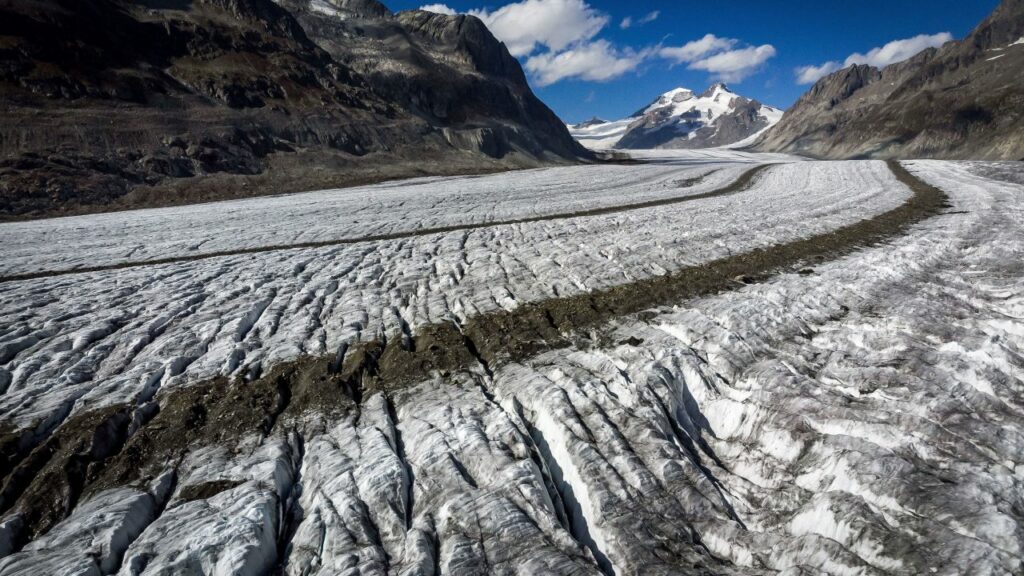There has been a considerable hoo-hah about the news that atmospheric CO2 has hit levels “not seen for 3 million years”. And of course “scientists” are “sounding the alarm over the potential for catastrophic changes”. What is rarely mentioned is what happened last time CO2 reached this level: The planet went into the deep freeze and glaciers came south for the first time since before the dinosaurs.
Yes, you read that right. Roughly 3 million years ago, the Earth entered its first Ice Age in over a quarter billion years. With CO2 over 400 ppm, the “greenhouse effect” dramatically didn’t kick in; instead the Pliocene gave way to the Pleistocene in which glaciers began to advance in ways not seen since the last ice age caused the “Permian-Triassic extinction event”, cold being really bad for life. But you didn’t read it in the news stories. They’re are all full of how hot the world was when CO2 was at 415 ppm. No ice for you.
NBC, for instance, quotes – who else? – Gavin Schmidt that in raising CO2 levels “we are putting our foot on the accelerator of climate change” without mentioning another pertinent detail, namely that it had been cooling for over 50 million years by then despite such concentrations of GHGs. (The inimitable Alexandria Ocasio-Cortez, who now says 12 years until doomsday was a jest that “Dwight from the Office” was too dim and non-ironic to get, also claims that when CO2 was at 400 ppm “bacteria and diseases we have never seen before roamed the Earth.”)
If CO2 is the “'global climate thermostat' for planet Earth”, as the Weather Network hyperventilates in telling us the last time CO2 hit 415 ppm there weren’t even people (making one wonder which emergent diseases AOC had in mind), it’s not working very well. But the only mention of glaciers on the Weather Network site was a sidebar story that they’re melting even faster.
Well, they sure weren’t last time. In somewhat careless common parlance we are told the last Ice Age ended 10,000 years ago. But an Ice Age is defined as a period with significant polar ice which means we’re still in one, just in an “interglacial” and mercifully so or you would be reading a cave wall not a computer screen. And in that sense we’ve been in one for over 2.5 million years. But why?
Ice ages are rare, again fortunately. It is generally believed that there have been five of them (ice ages not glaciations, to repeat): the Huronian around 2.4-2.1 billion years ago just as life was getting started, the Cryogenian 720-630 mya (million years ago) that may or may not have created a snowball Earth with ice reaching the equator, the Andean-Saharan 460-420 mya, the Karoo from 360 to 260 mya and then nothing until about 2.58 mya when the warmer Pliocene gave way to the Pleistocene (aka Quaternary Glaciation) that has seen repeated glaciations, something like 20 of them, with more ice than not at least in the last 800,000, as the old 41,000-year cycle gave way to a 100,000-year cycle (the last glaciation, for instance, seems to have lasted from 115,000 to 11,700 years ago).
One reason people worry about the “Snowball Earth” scenario, which incidentally reminds us that reconstructing the past involves a good deal of imaginative guesswork from fairly limited data, is that the models can’t get out of it. As Wikipedia’s “Snowball Earth” article admits, “the levels of CO2 necessary to melt a global ice cover have been calculated to be 130,000 ppm, which is considered by to be [sic] unreasonably large.” So perhaps there’s too much emphasis on CO2?
When it comes to glaciations it somehow gets captured and stored off site. The general explanation for recent glaciations has nothing to do with GHGs. It’s so-called “Milankovitch cycles,” irregularities in the Earth’s orbit around the sun. Which raises other questions including the “transition problem” of why the periodicity of glaciations changed from 41,000 to 100,000 years around 1 million B.C. And why there were no glaciations for over 250 million years despite there being Milankovitch cycles and now we can’t seem to get rid of them. Which we can’t.
Journalists say scientists say we have got rid of them, and that runaway warming is coming. But according to the Wikipedia article on the “Quaternary glaciation” the planet is cooling due to our complex relationship with the Sun: “Based on orbital models, the cooling trend initiated about 6,000 years ago will continue for another 23,000 years.” Orbital models? What about CO2? Apparently it’s not that big a deal.



PBS produced a documentary on Nova in February 2020 in which, at the end of the two-hour programme, we are lead to the usual sermon on the catastrophic doom and gloom, mostly man-made, increase of CO2 in the atmosphere, leading to the melting of the ice caps with serious consequences for life on Earth. Has anyone, on the web or elsewhere, fact-checked and commented on the claims made in this documentary about the percentage of man’s contribution to the increase in CO2 (ignoring the oceans, volcanoes, etc), the irreversible disappearance of the ice caps and the permafrost, acting as the ultimate regulator of the climate on our planet ?
Thank you.